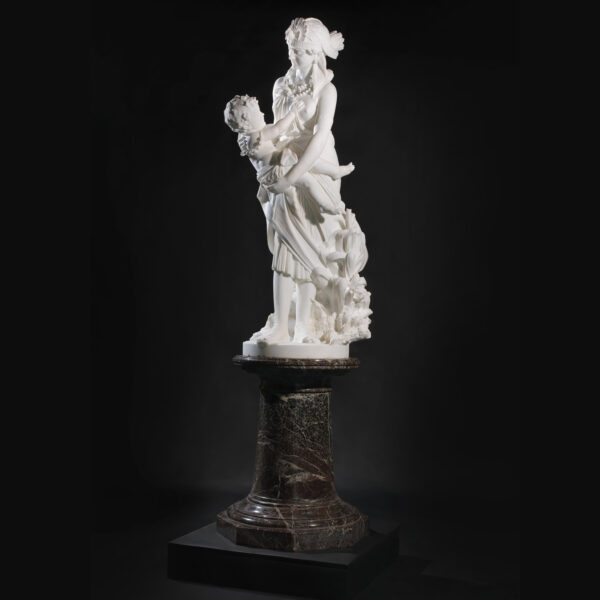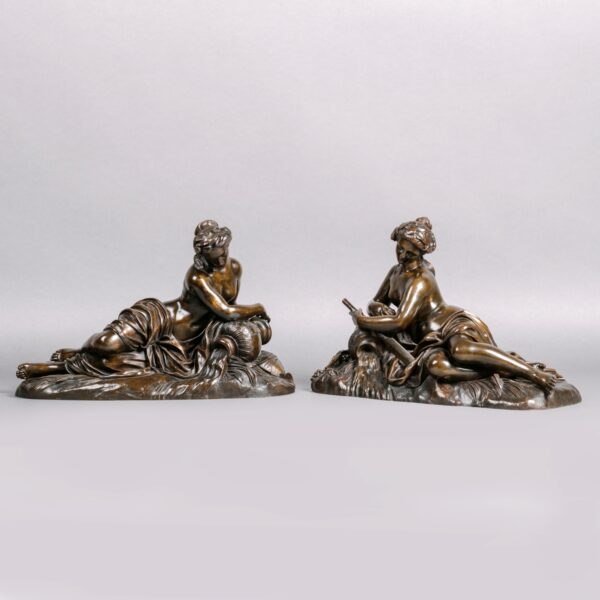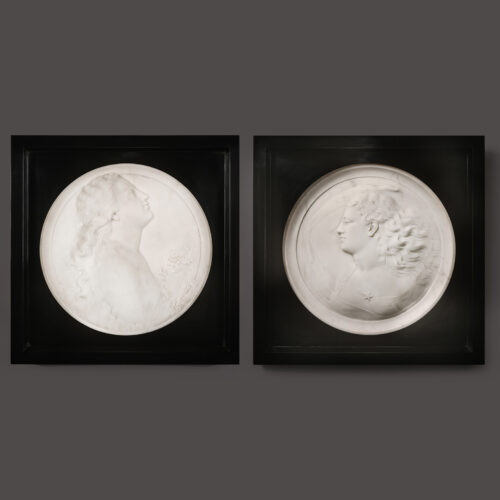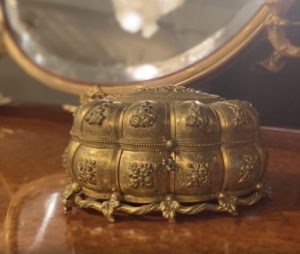Jean-Léon Gérôme (French,1824 – 1904)
جان ليون جيروم (1824–1904)، كورنثوس، برونزية مذهبة
POA
‘Corinth’ A Gilt-Bronze Classical Female Nude Seated on a Corinthian Capital, By Jean-Léon Gérôme (1824–1904). Gilt-bronze with traces of polychrome...
ابعاد
الارتفاع: 73 سم (29 بوصة)Width: 33 cm (13 in)
Depth: 29 cm (12 in)
وصف
‘Corinth’ A Gilt-Bronze Classical Female Nude Seated on a Corinthian Capital, By Jean-Léon Gérôme (1824–1904).
Gilt-bronze with traces of polychrome decoration, enamel, turquoise and opal.
Signed J.L. Gérôme
Stamped ‘2135’ and with the Siot-Decauville foundry seal and with inscription NON LICET OMNIBUS ADIRE CORINTHUM at the front.
On a gilt-bronze mounted marble pedestal signed ‘MILLET’.
The pedestal: 120 cm | 47 1/4 in high
The present gilt bronze model, cast by the renowned Parisian foundry Siot-Decauville, is directly drawn from what is undoubtedly the most iconic sculpture of Jean-Léon Gérôme’s oeuvre. The original plaster model (Musée d’Orsay ), created in 1903, was the last sculpture made by Gérôme before his death.
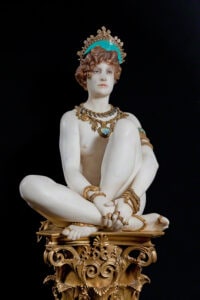
The marble and bronze version (collection of Jack Nicholson).
This painted plaster is a striking scale model of illusionism, enhanced with jewelry made of wire and coloured wax. It was found in Gérôme’s studio after his death, along with a marble in the course of execution. Finished by Gérôme’s long term assistant Louis-Emile Décorchemont (1851-1921), the marble (collection J. Nicholson, Beverly Hills) is tinted and decorated with semi-precious stones as well as with gilded bronze jewelry that was made for Gérôme by the founder Hébrard. The marble was presented posthumously at the 1904 Paris Salon as number 2922 and described as follows:
“une femme nue couverte de veritable bijoux est assise sur le chapiteau d’une colonne corinthienne en marbre vert”.
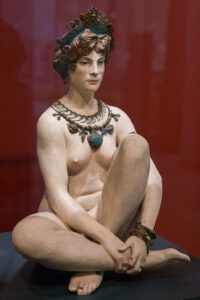
The original plaster model (Musée d’Orsay, inv. S RF 2008)
This chryselephantine sculpture is the crowning of Gérôme’s thirty years of activity as a sculptor, a sumptuous ensemble of materials allied with an extreme accuracy in the representation of the figure.
The sculpture was cast in a small edition by the Siot-Decauville foundry. Gerald Ackerman has recorded no more than six bronzes of Corinth, in either gold or silver and all with a slightly different finish. One is in the collection of Stuart Pivar in New York (gilt-bronze, op. cit. Romantics to Rodin) while others that appeared at auction in the past are now in private collections .
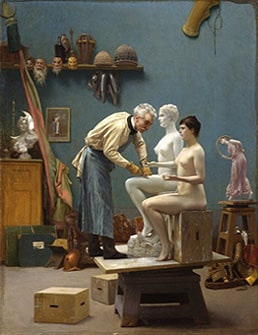
Jean-Léon Gérôme, The Artist Sculpting ‘Tanagra’ 1890. Oil on canvas. Dahesh Museum of Art, New York. (Ackerman, cat. no. 419.3)
Like the sculpture of Tanagra which Gérôme had exhibited in the Salon of 1890, Corinth plays with the ancient idea of an allegorical divinity protecting a city, with an added erotic dimension. The inscription at the base of the capital refers to the ancient motto Non licet omnibus adire Corinthum (not everyone can afford Corinth), which was an allusion to the prohibitive prices charged by the sacred prostitutes in the temple of Aphrodite in Corinth. Located in the Peloponnese, Corinth was a powerful and wealthy city state, famous for its ceramics, its temple of Aphrodite and for being the birth place of the third order of the classical architecture. Often qualified as opulent and luxurious in antique texts, it was also a source of fascination in the 19th century.
Alluring in her gleaming finery, the beautiful, bejewelled nude casts a forbidding look towards its viewer. The model for Corinth was the wife of the owner of the Siot foundry, which was responsible for the casting of the work. Aware of the archeological discoveries of his time, Gérôme decided to emulate the polychromy of antique sculptures. For the jewels, he found inspiration in the Greek and Etruscan pieces from the Campana collection that had entered the Louvre in 1861. The figure sits with her legs crossed on the capital form that was named after her town. The sculptor’s precision and accuracy are mesmerizing. The lifelike rendition of all the details and the delicate suppleness of her flesh are remarkable and beautifully enhanced by the metallic sheen of the gold, making Corinth a sumptuous piece of sculpture.
Gérôme took an interest in sculpture from an early age but he did not devote himself to it until 1878, when he was in his fifties, with a work entitled The Gladiators that was inspired by the central group in one of his emblematic paintings, Pollice Verso (1872, Phoenix Art Museum). Basing himself on the archaeological discoveries of his day and fascinated by the romantic and dramatic lifestyle of the Ancient Romans, he designed his sculptures to be polychromed, creating figures that seem about to spring to life.
فرنسا، حوالي عام 1900.
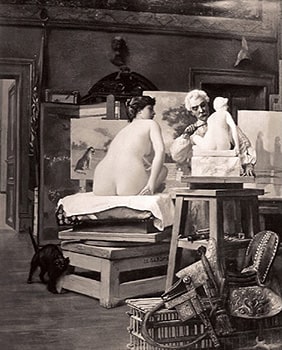
Jean-Léon Gérôme, Self Portrait in Studio, circa 1902. Photograph of a lost painting. (Ackerman, cat. no. 372. Photograph courtesy of Bibliothèque Nationale de France)
تاريخ
حوالي عام 1900
أصل
فرنسا
متوسط
Gilt Bronze
توقيع
Signed J.L. Gérôme.on original gilt-bronze mounted marble pedestal signed 'MILLET'.
Jean-Léon Gérôme (1824 – 1904) was a French painter and sculptor, known for his highly accomplished academic style. A student of Paul Delaroche, he attended the École des Beaux-Arts in Paris, and exhibited frequently at the Paris Salon with great success, earning himself numerous medals. Regarded as one of the initiators of the Neo-Greek style, his works were of great influence to the Parisian art world of the nineteenth century.
Although today best known as a painter of historical and mythological subjects, he created a large number of exceptional sculptures, many of which were exhibited to great acclaim at the Great Exhibitions of the period. His first work was a large bronze statue of a gladiator holding his foot on his victim, shown to the public at the 1878 Exposition Universelle. This bronze was based on the main theme of his painting Pollice verso (1872). The same year he exhibited a marble statue at the 1878 Salon, based on his early painting Anacreon, Bacchus and Cupid (1848).
Among his other works are Omphale (1887), and the statue of the Duc d’Aumale (1899) which stands in front of the Château de Chantilly. His life-size statue Bellona (1892), in ivory, bronze and gemstones, attracted great attention at the exhibition in the Royal Academy of London. The artist then began an interesting series of ‘conquerors’, wrought in gold, silver and gems entitled Bonaparte Entering Cairo (1897); Tamerlane (1898); and Frederick the Great (1899).
Works by Gérôme are now in the collections of the Musée d’Orsay, Paris; the John Paul Getty Museum, Los Angeles; the Hermitage Museum, Saint Petersburg, Russia; the National Gallery, London, and many more leading institutions world wide.
Bibliography:
Ackerman, G.M. La vie et l’oeuvre de Jean-Léon Gérôme, ACR Edition Internationale ( Courbevoie, France), 1992.
Meyer, Jonathan. Great Exhibitions – London, New York, Paris, Philadelphia, 1851-1900, Antique Collectors’ Club, (Woodbridge.UK), 2006; p.236.
‘The Romantics to Rodin’, exh. cat., Los Angeles County Museum, 1980, n. 157.
G. Ackerman, The Life and Works of Jean-Léon Gérôme, New York, 1986, p. 330, cat. no. S.63
G. Ackerman, ‘Gerome’s Sculpture: The Problems of Realist Sculpture’, Arts Magazine, February, 1986, vol. 60, no. 6, pp. 88-89, fig.23
G. Ackerman, ‘Jean-Léon Gérôme, Monographie révisée’. Catalogue raisonné mis à jour, (Paris), 2000; p. 402-403, S 63.
E. Papet, ‘Autour de la Corinthe de Gérôme’ in La Revue des Musées de France, October 2009, pp. 73-84.
Laurence des Cars & others, ‘Jean-Léon Gérôme (1824-1904): L’Histoire en spectacle’, exh. cat., Paris, Musée d’Orsay, 2010, p. 326-328, nos. 192 – 193.
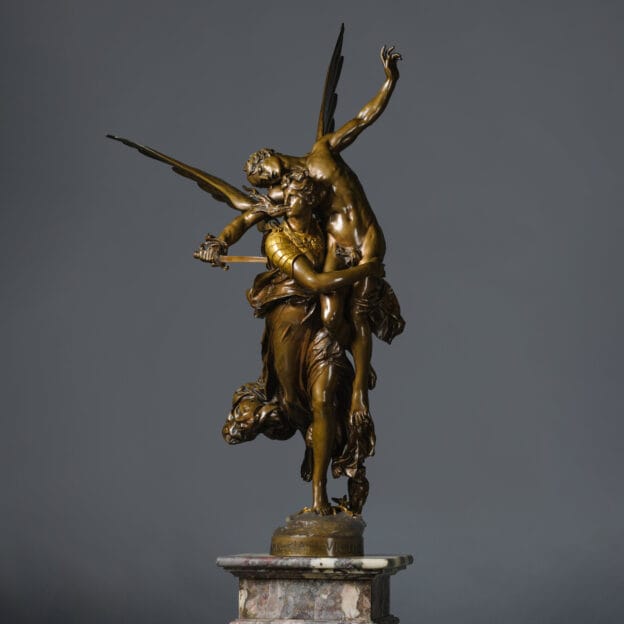




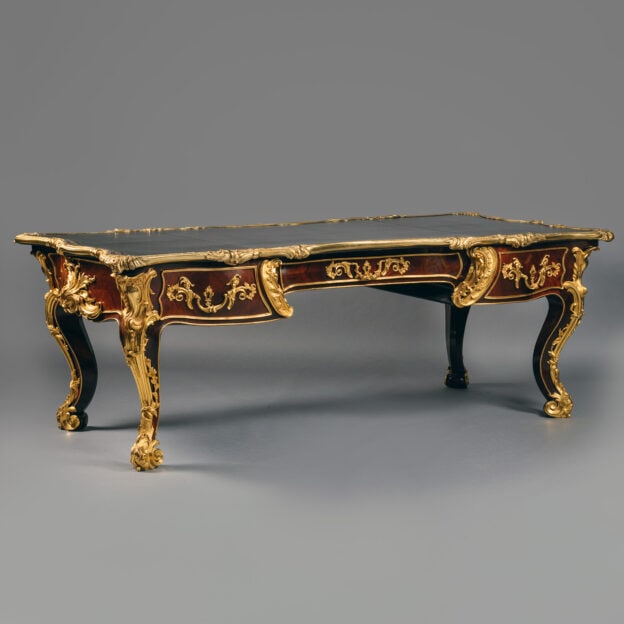

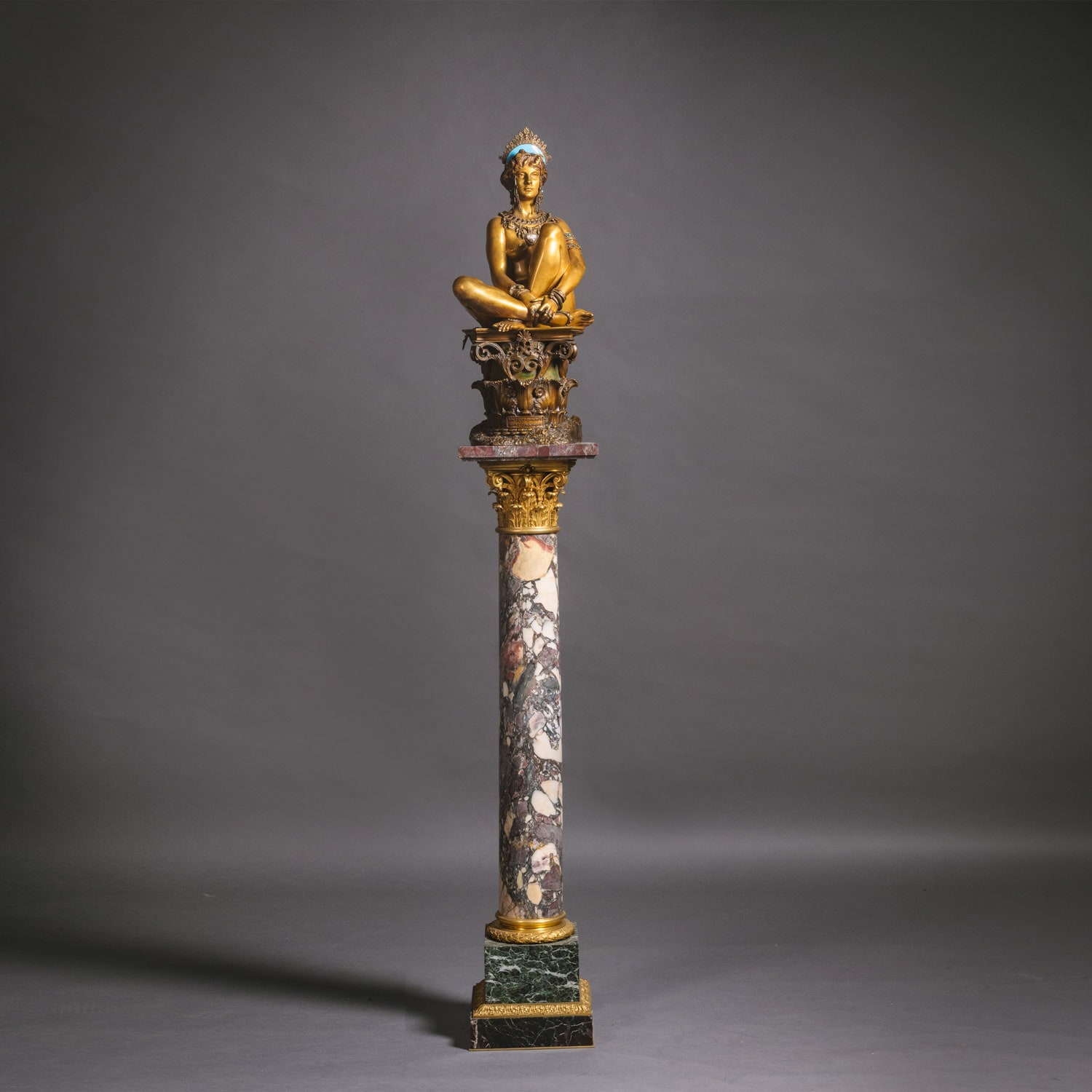
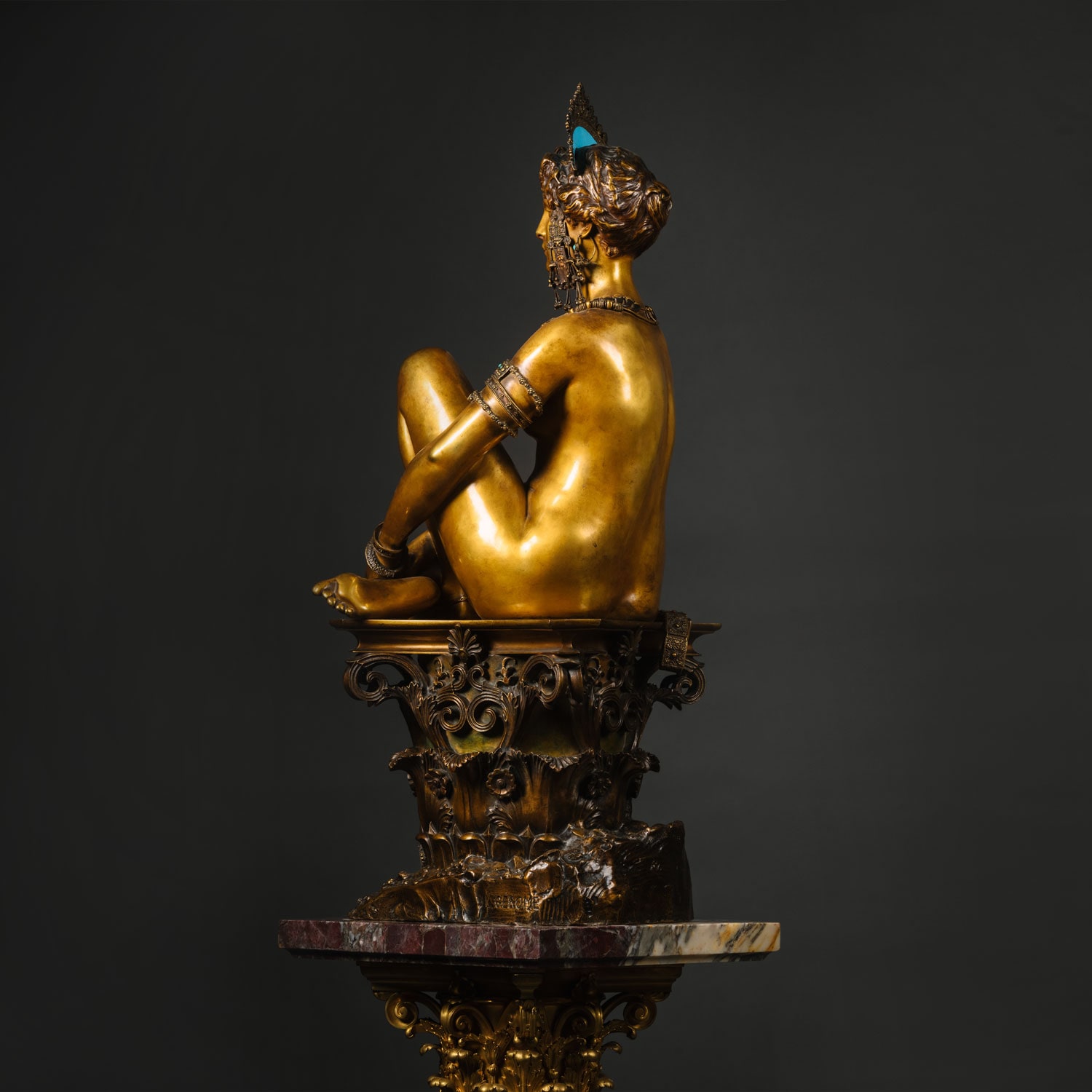
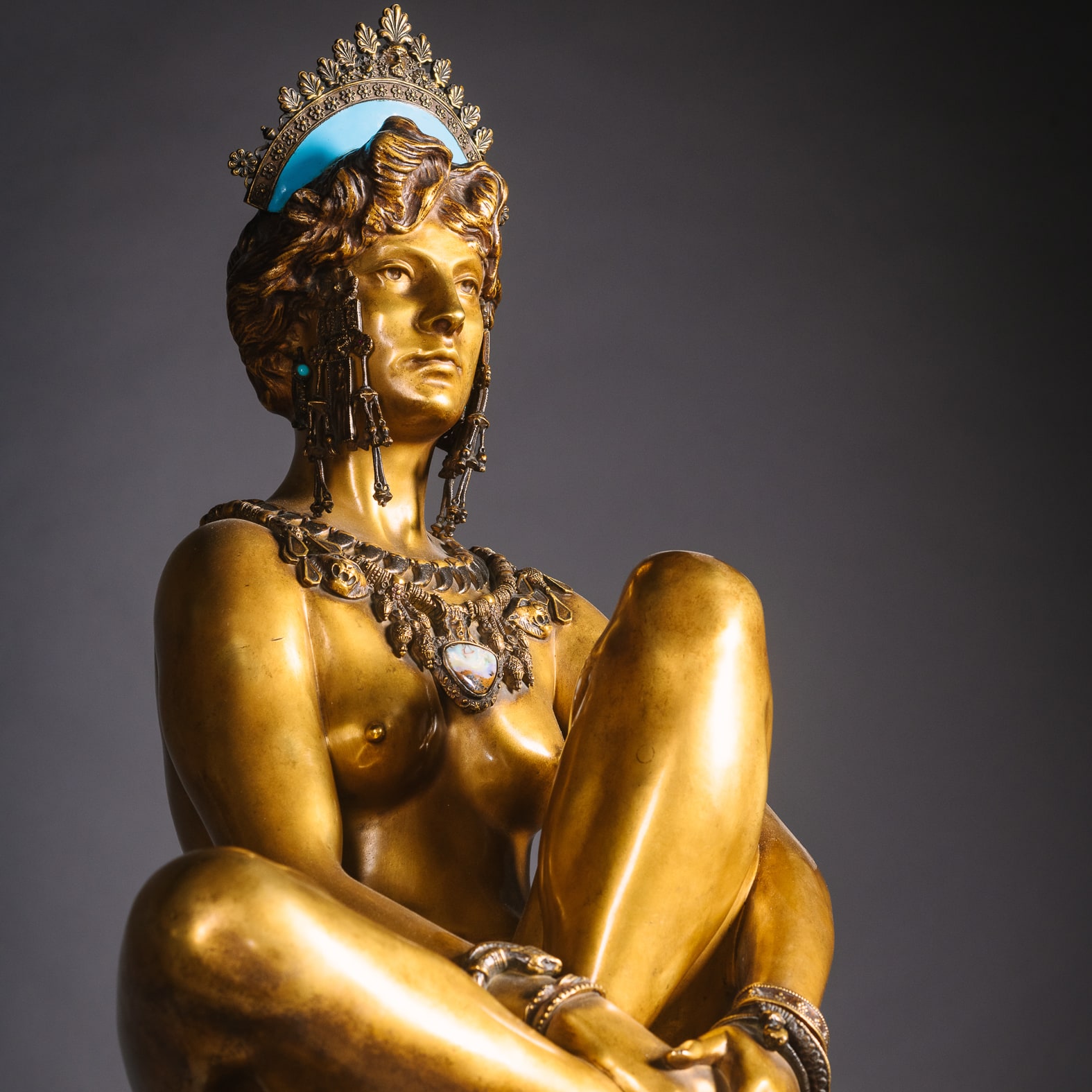
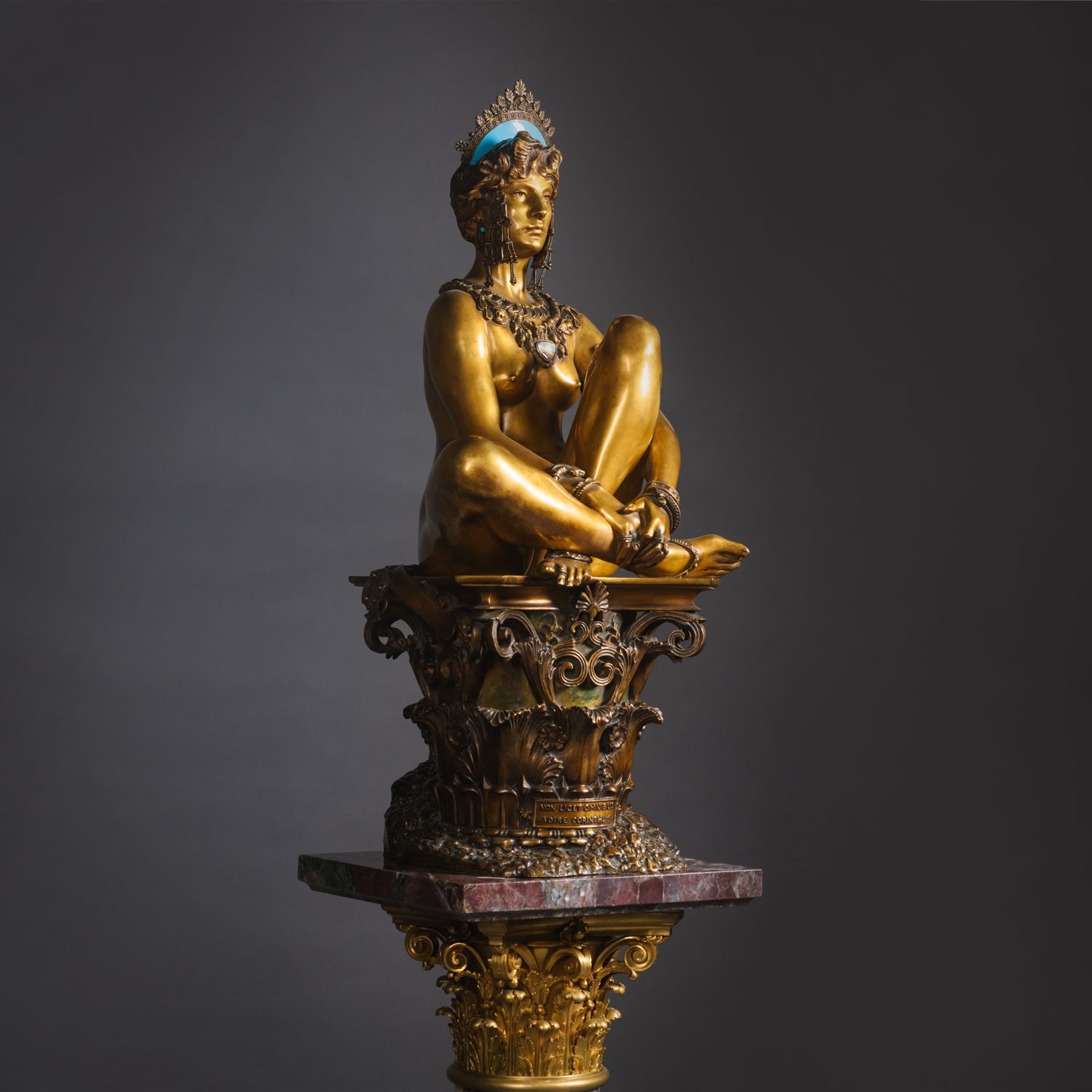
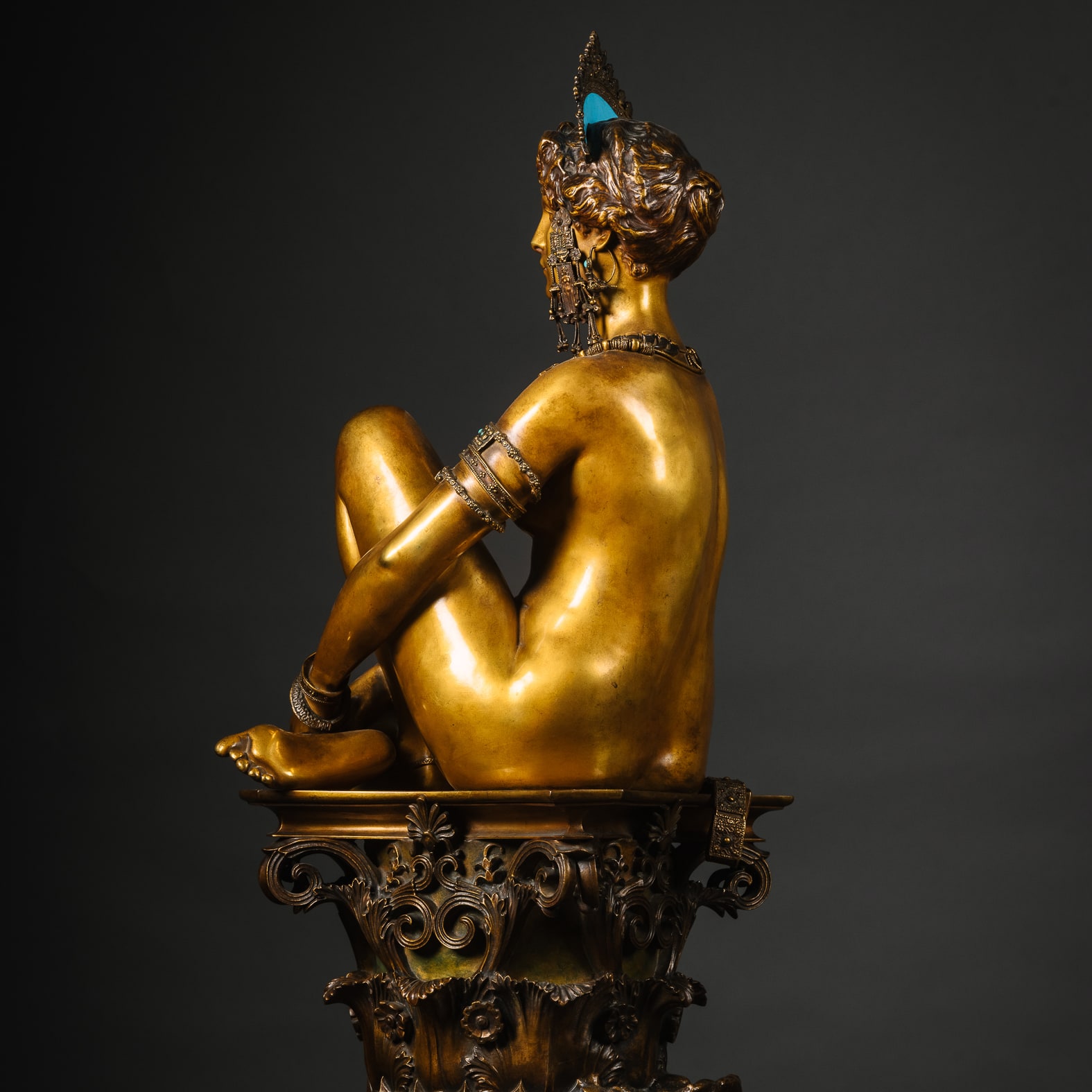
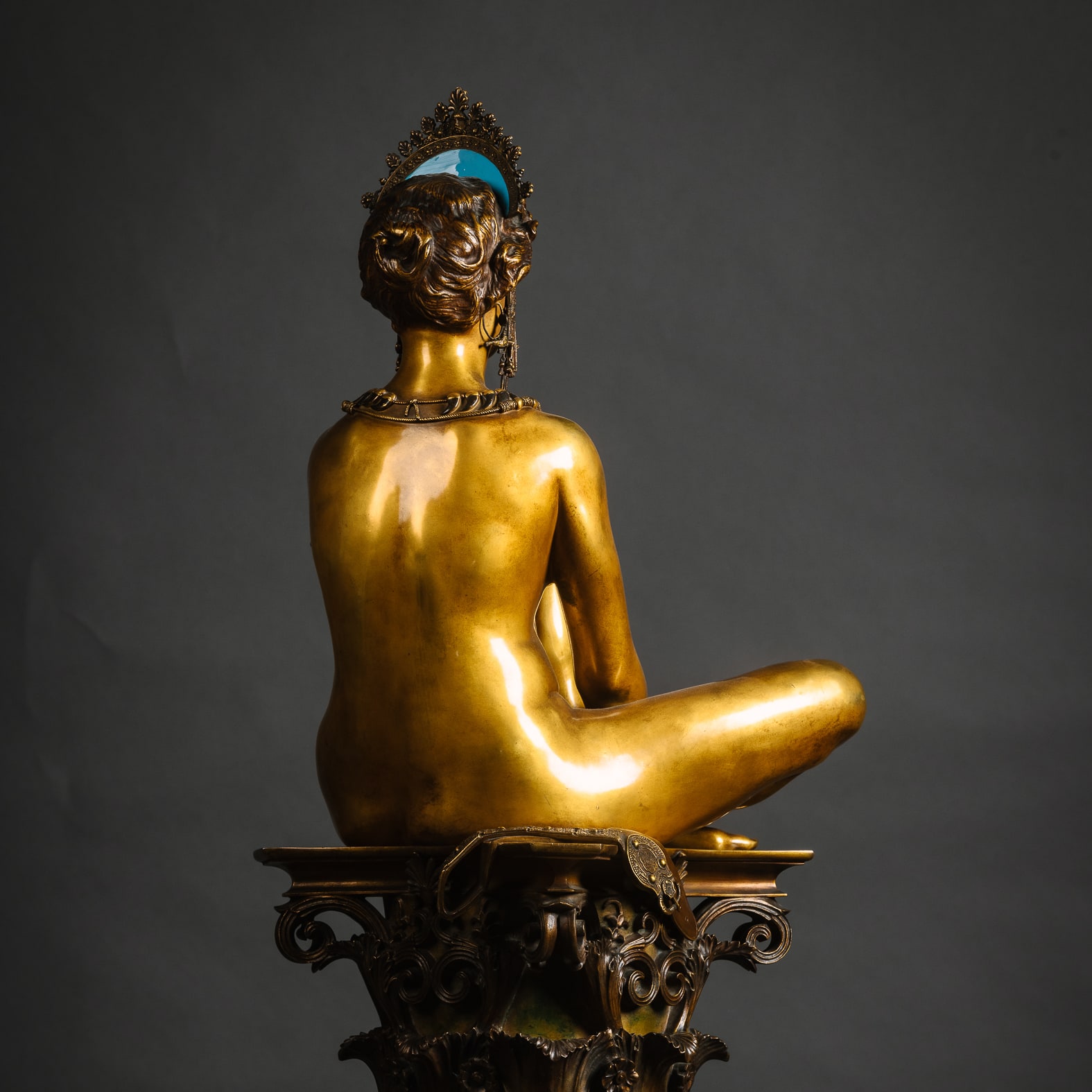
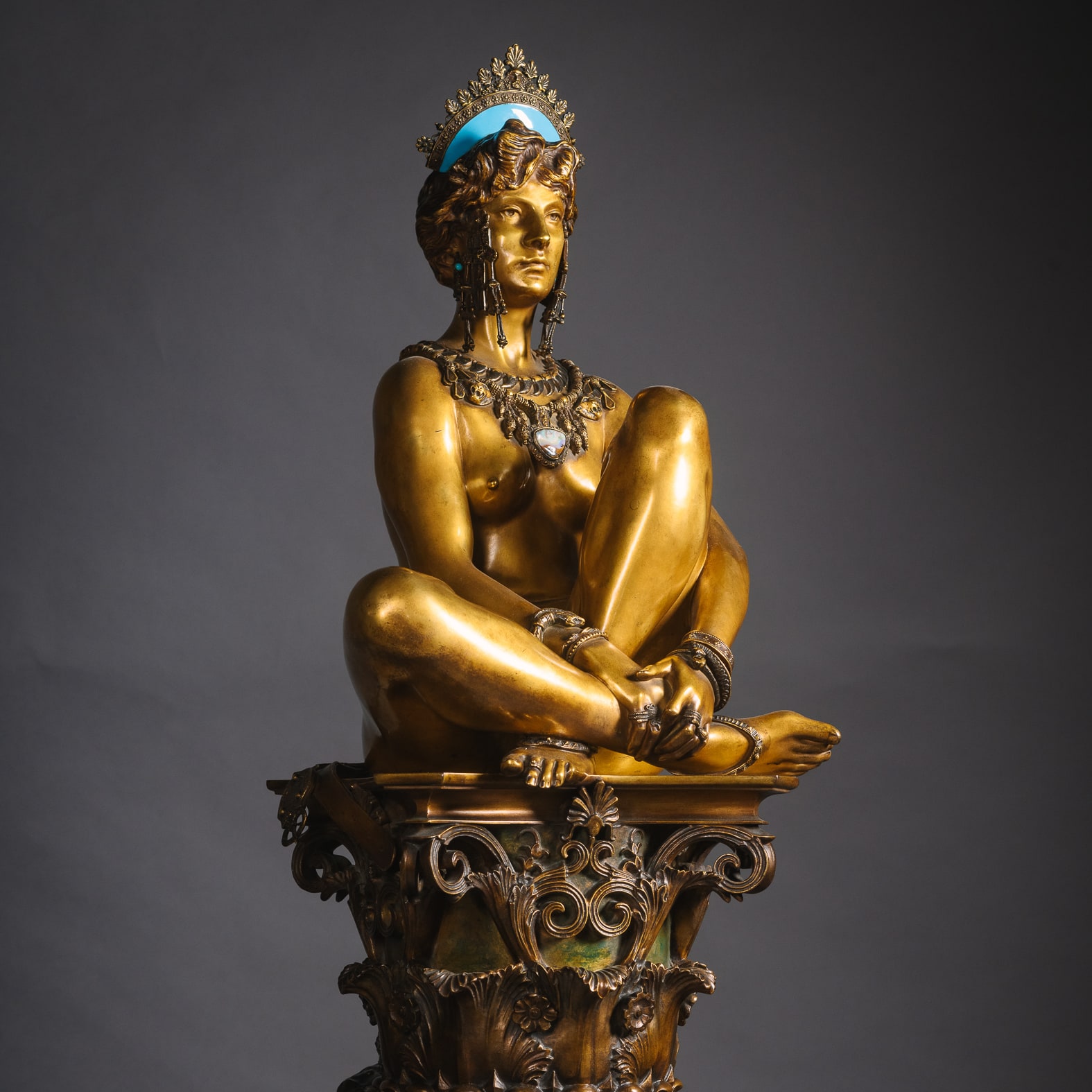
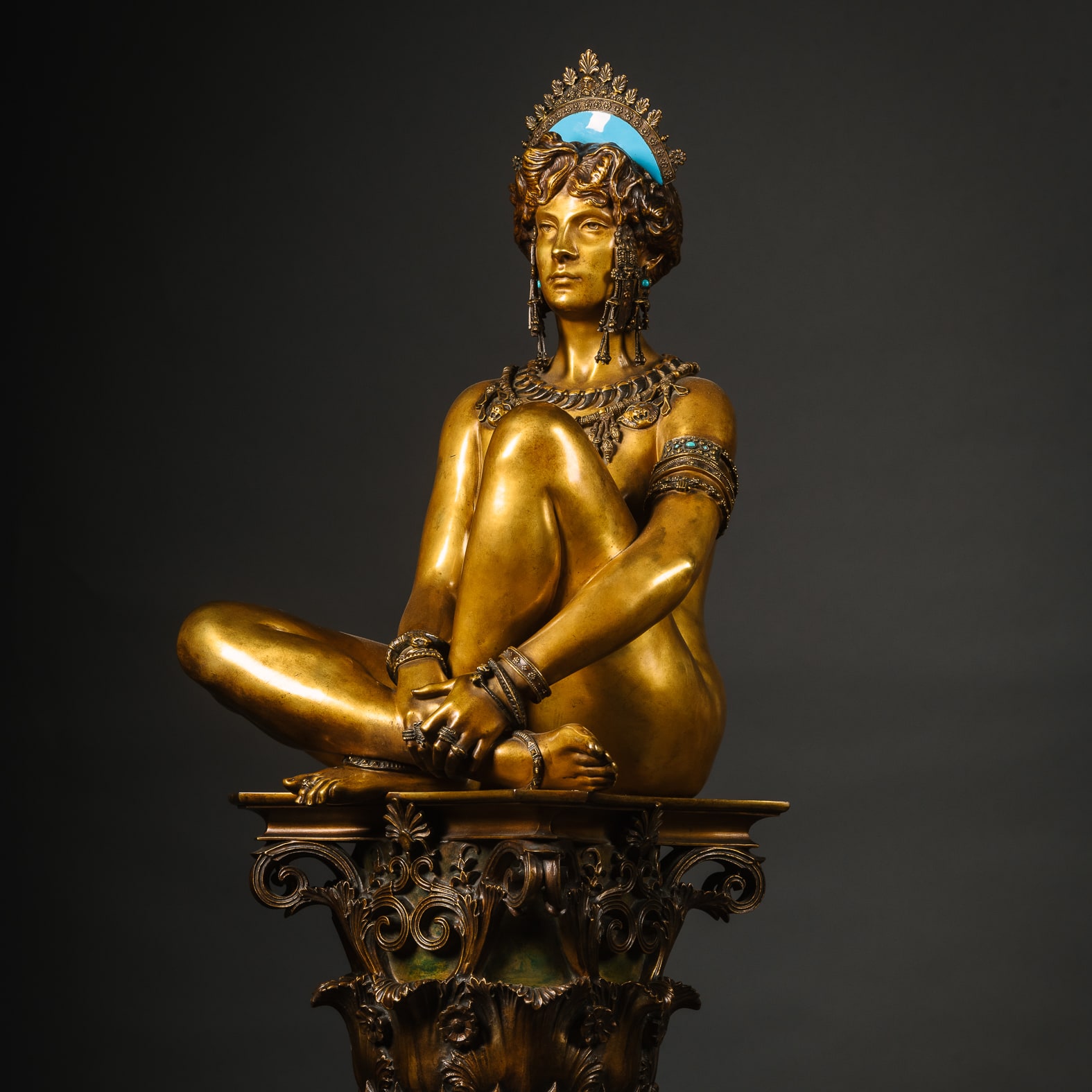
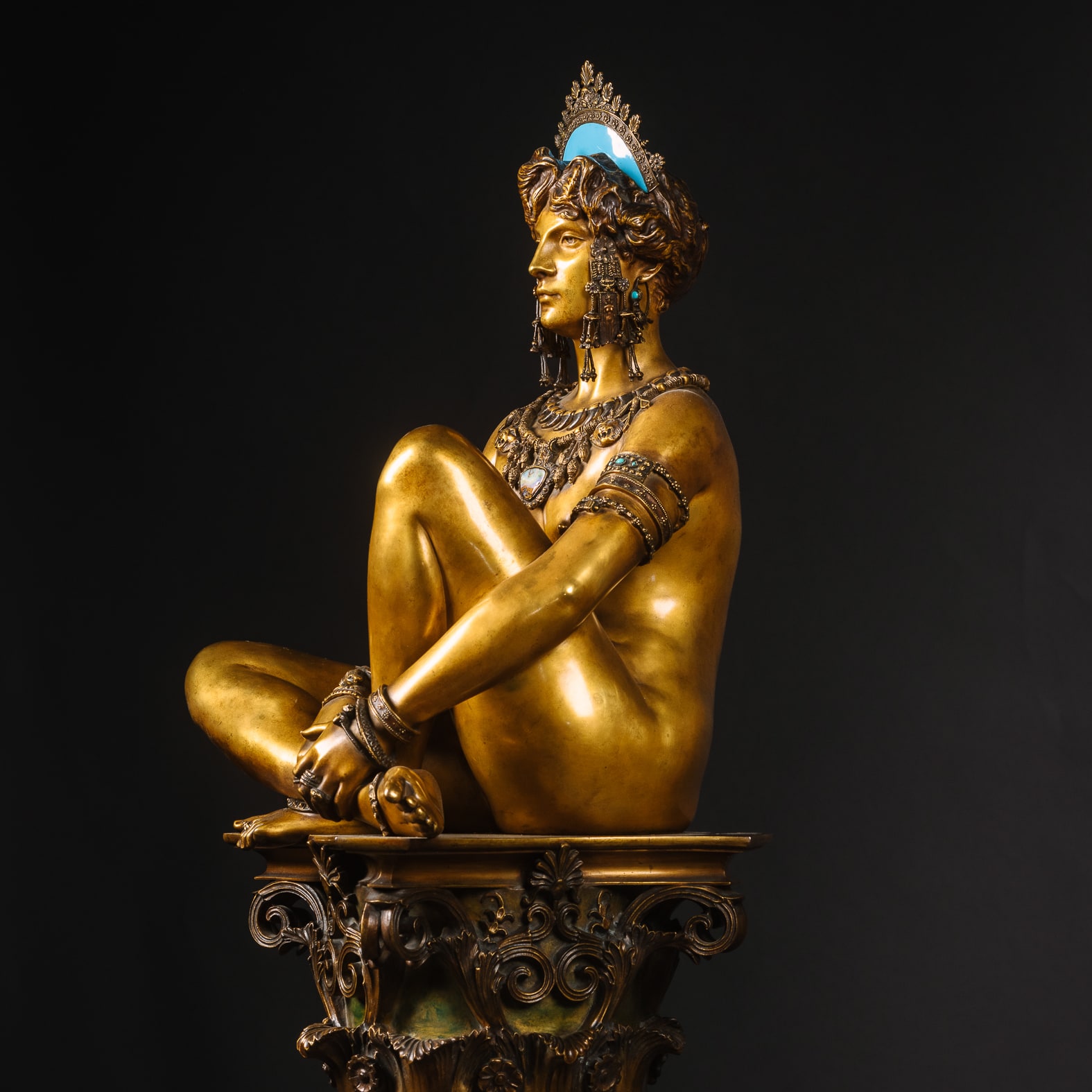

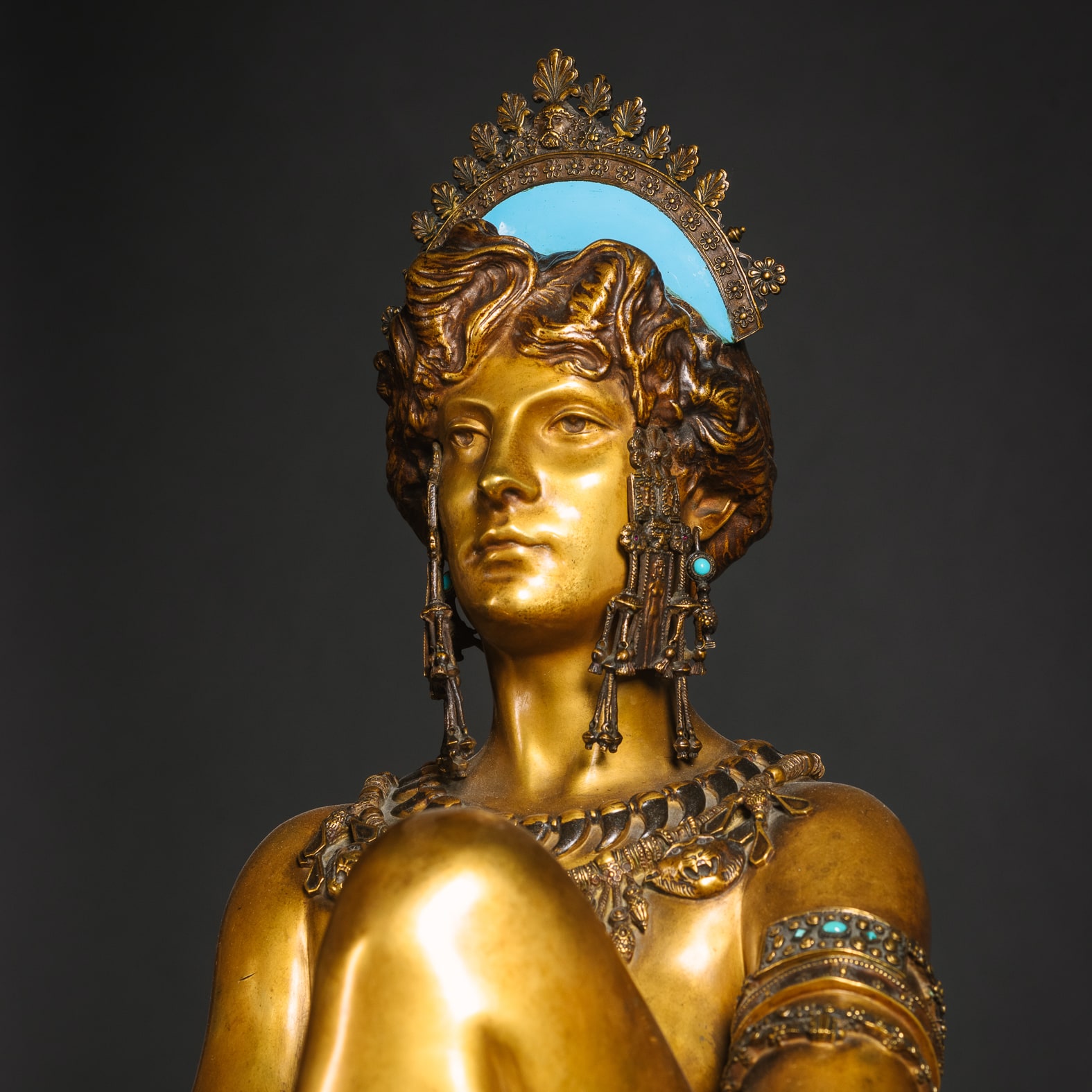
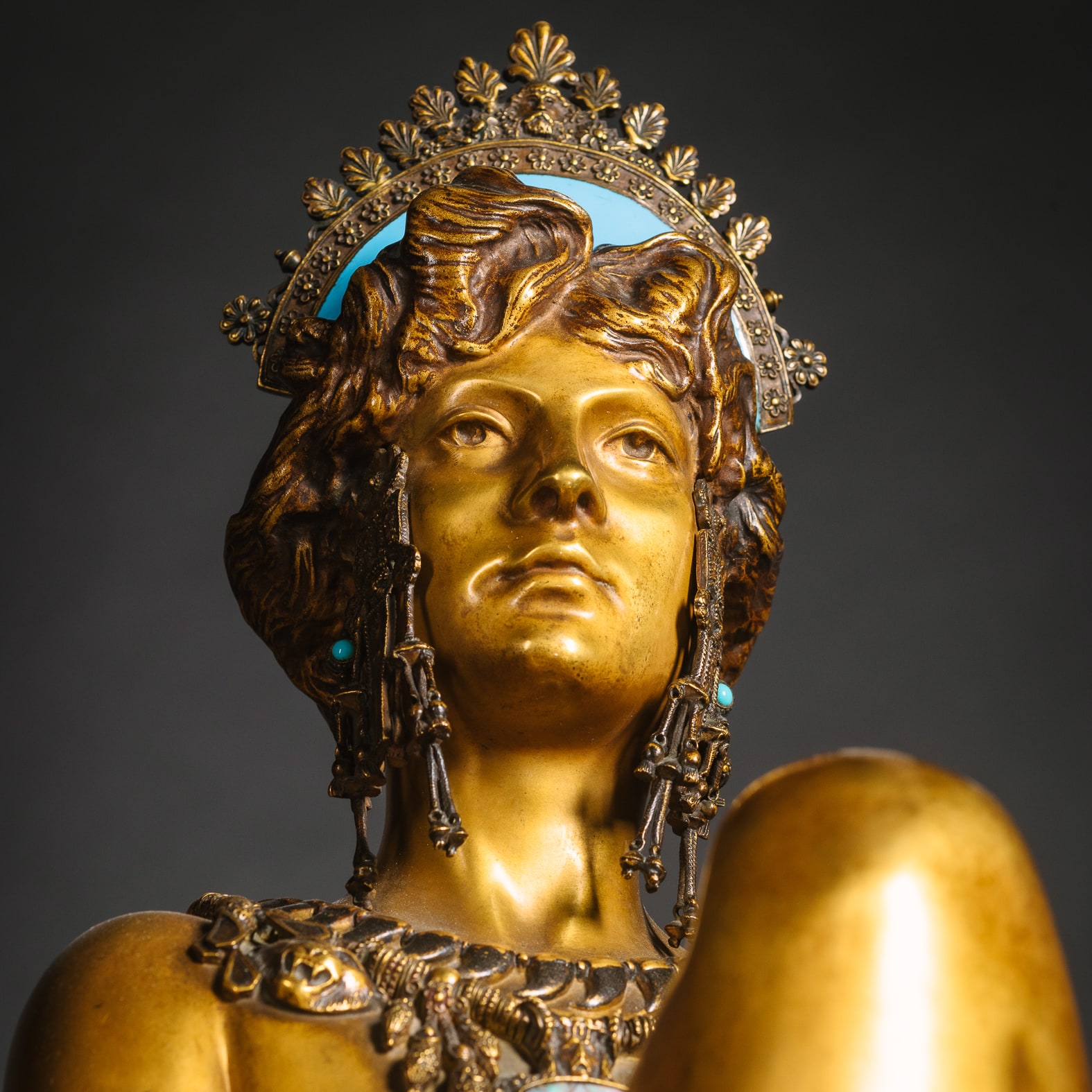
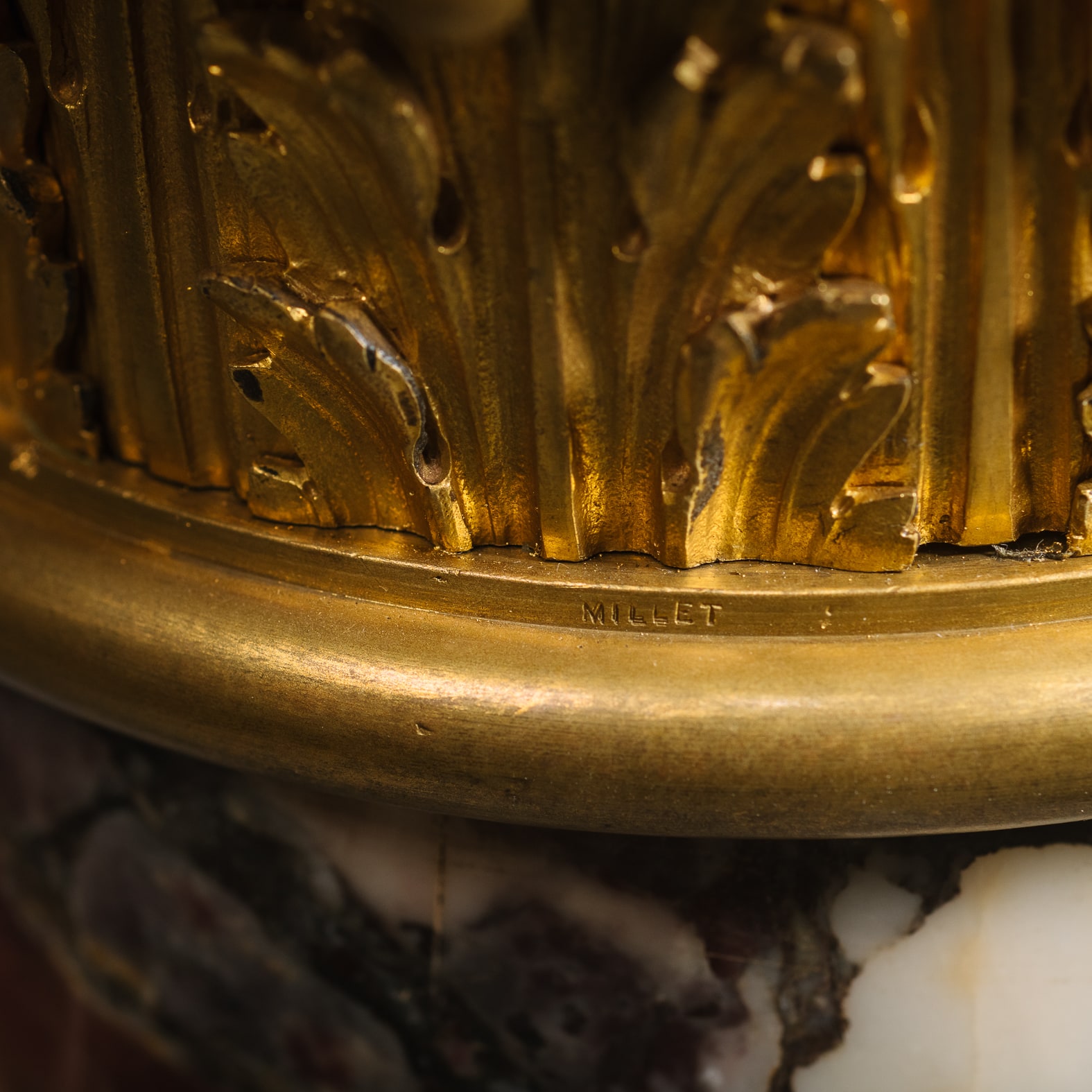
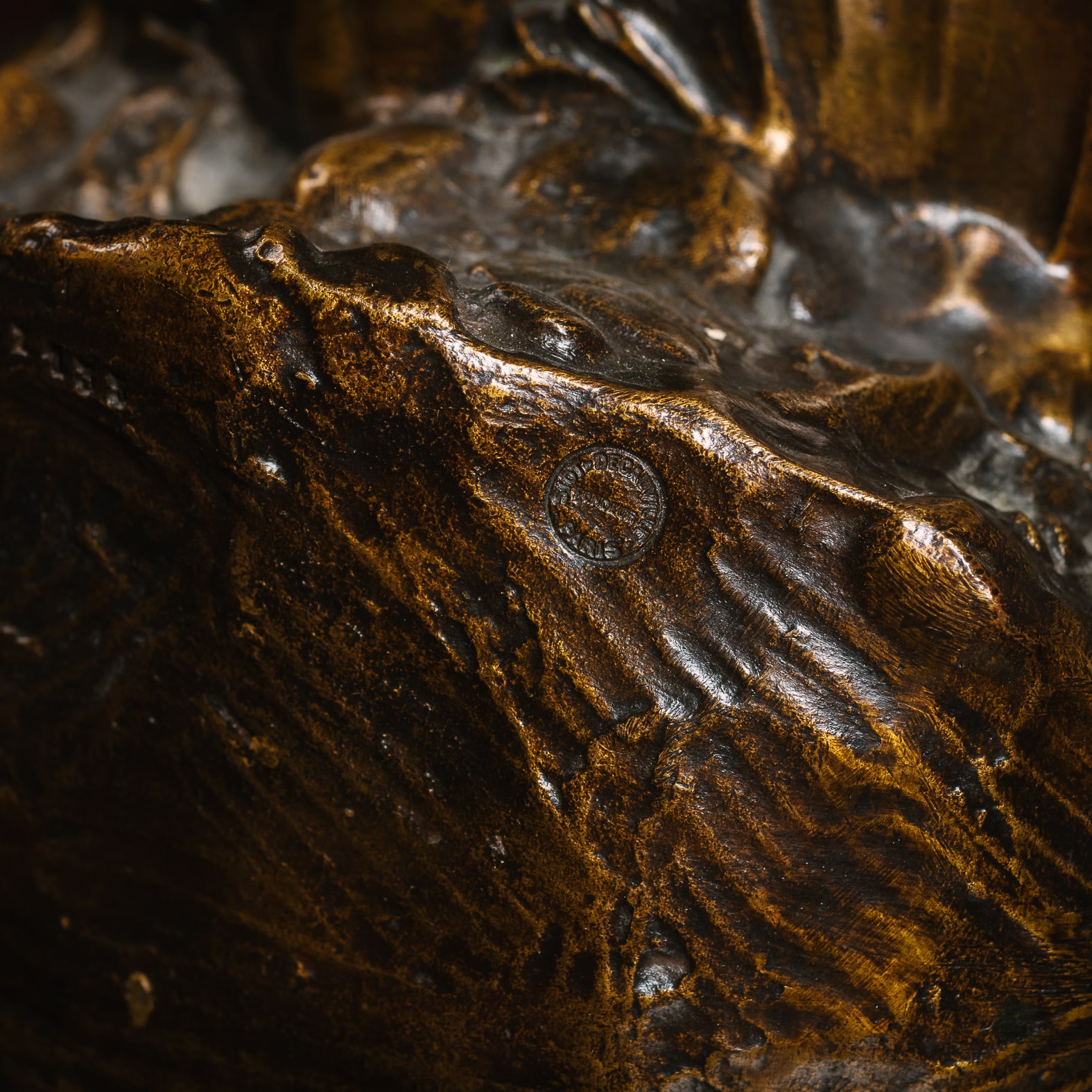

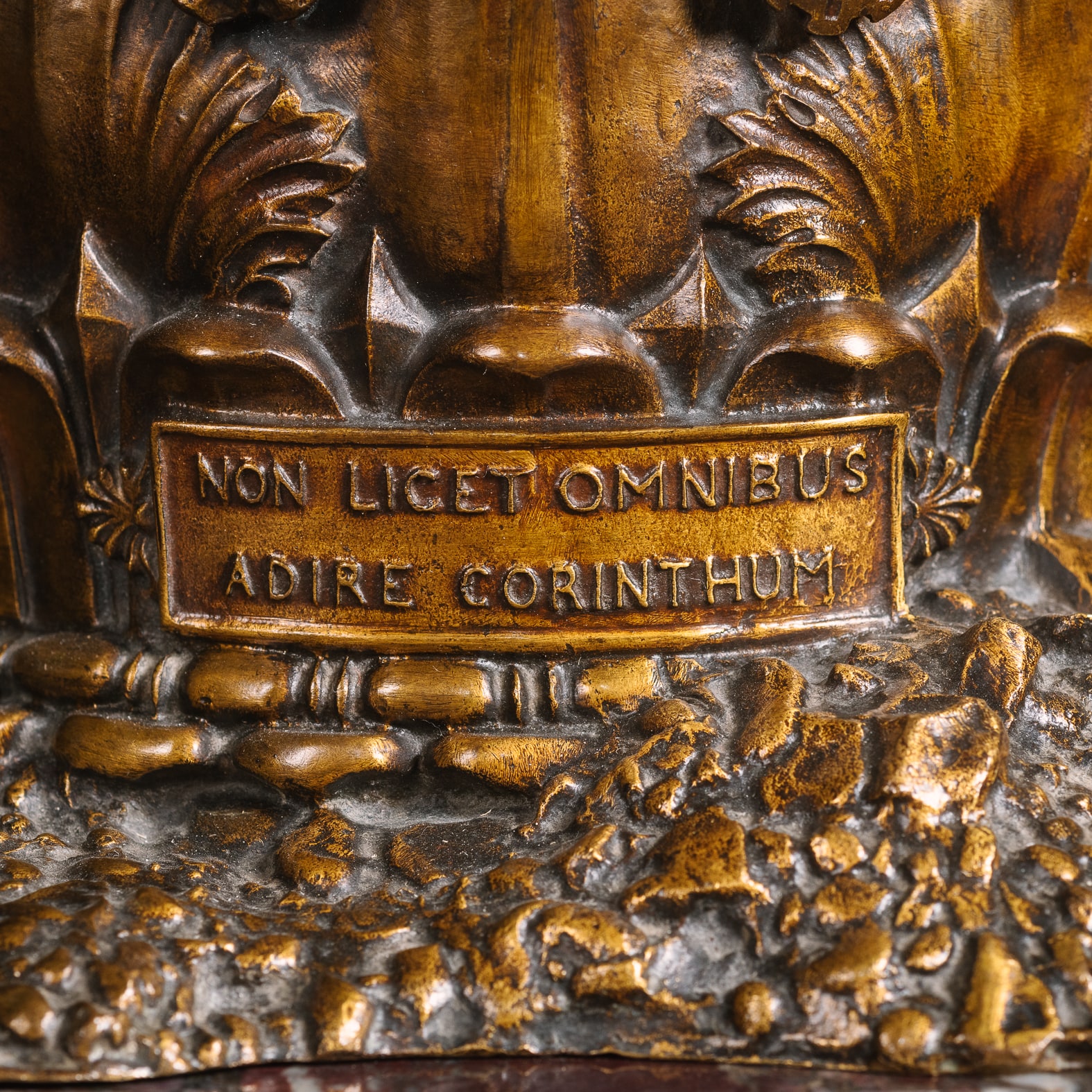
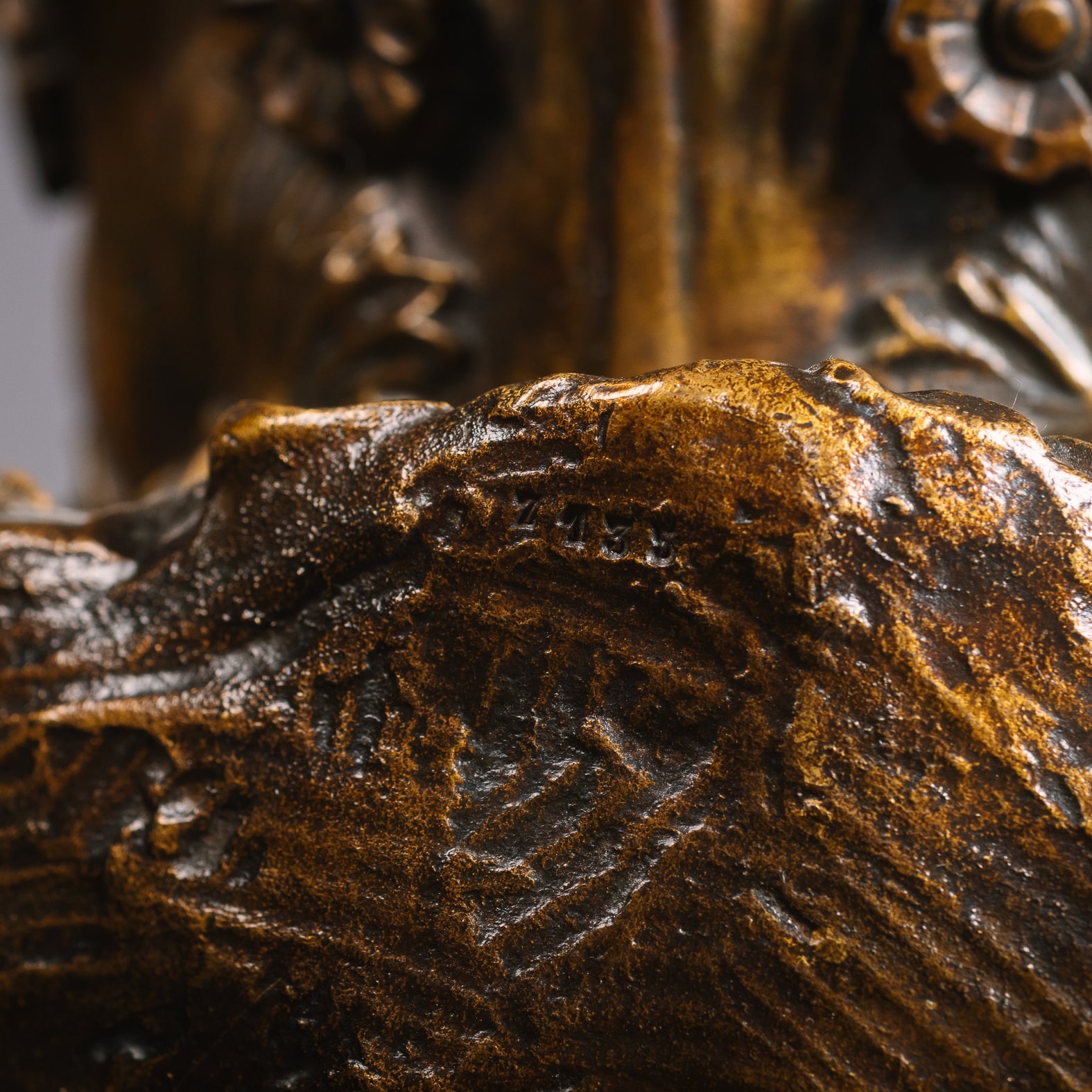
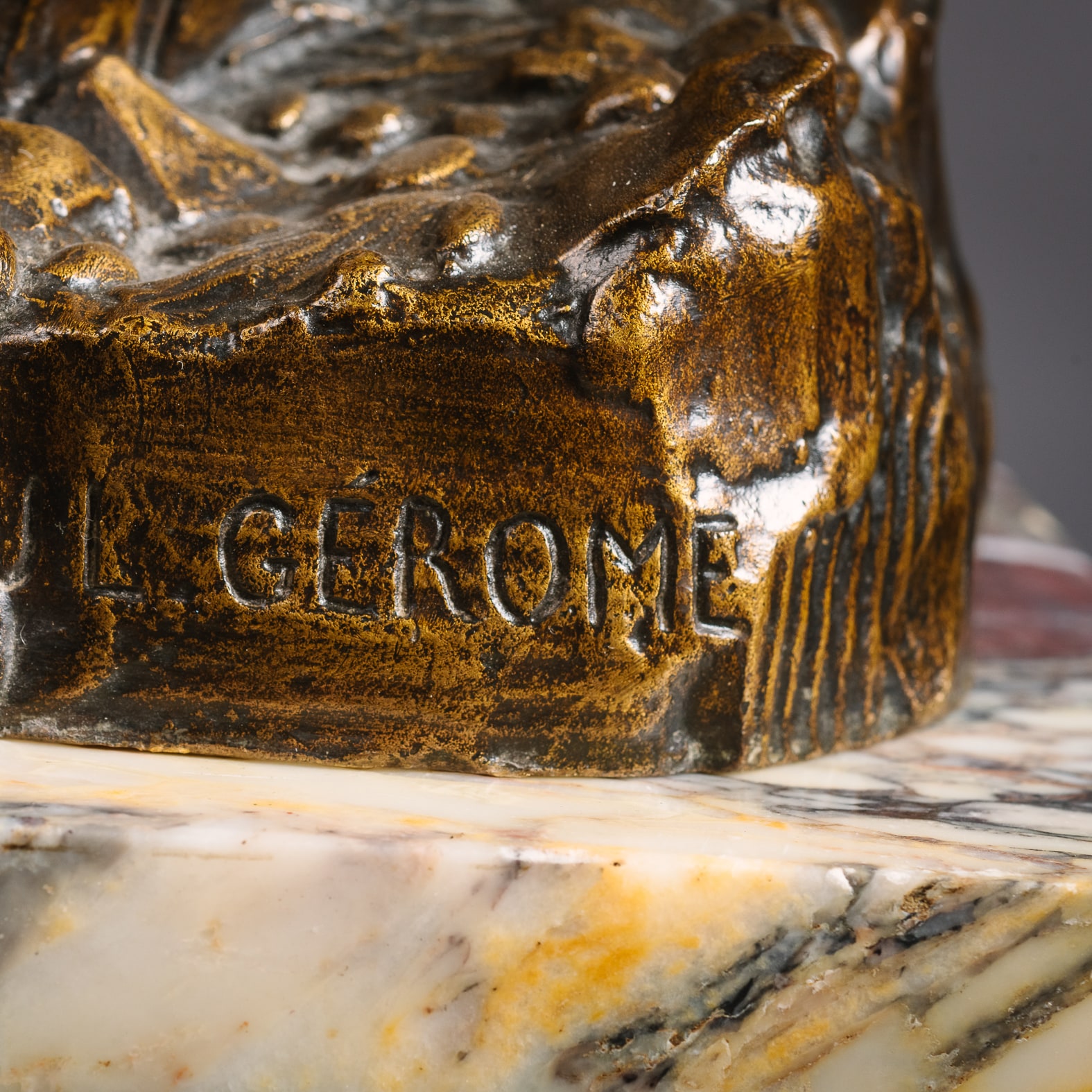

 طبع
طبع